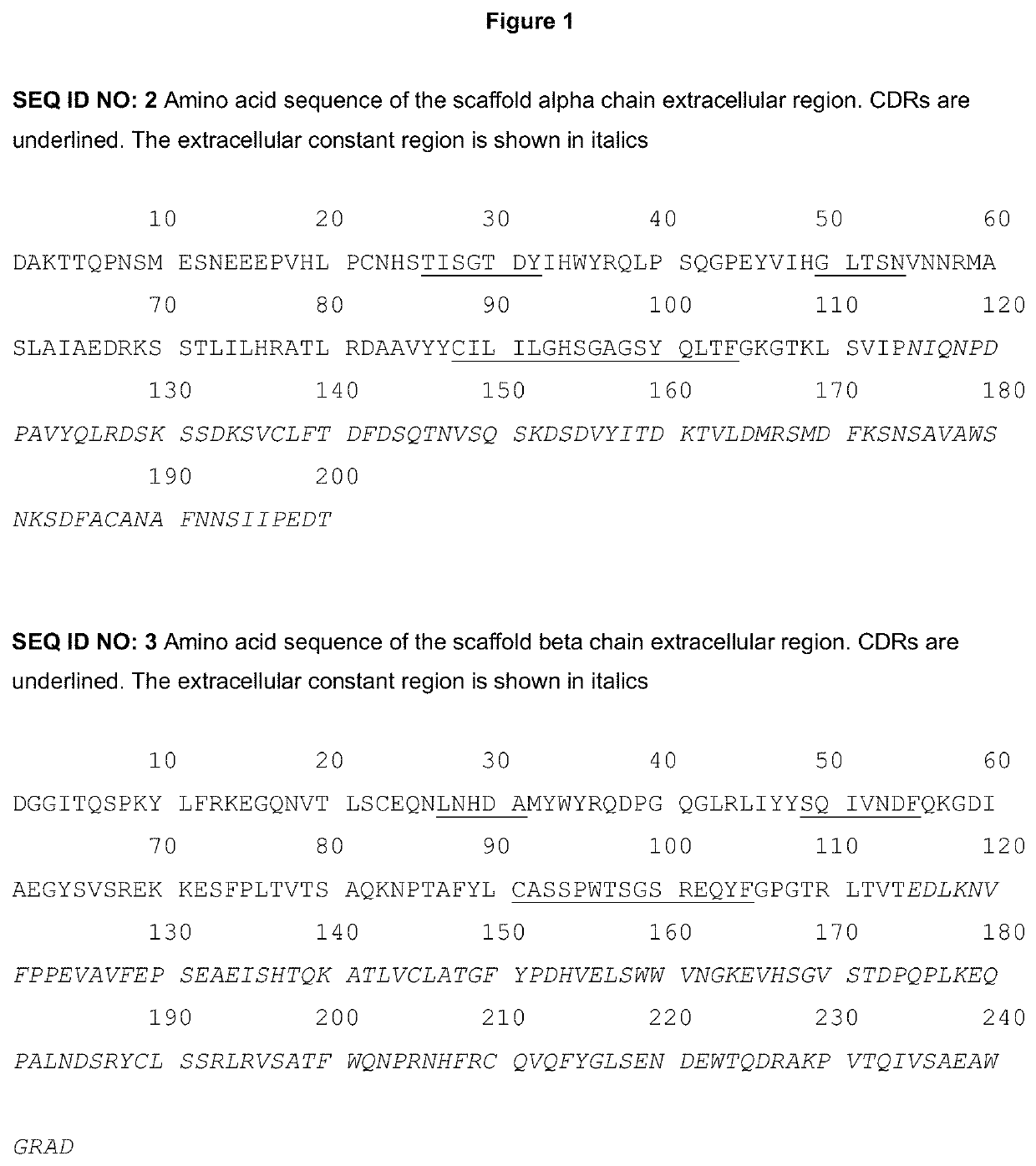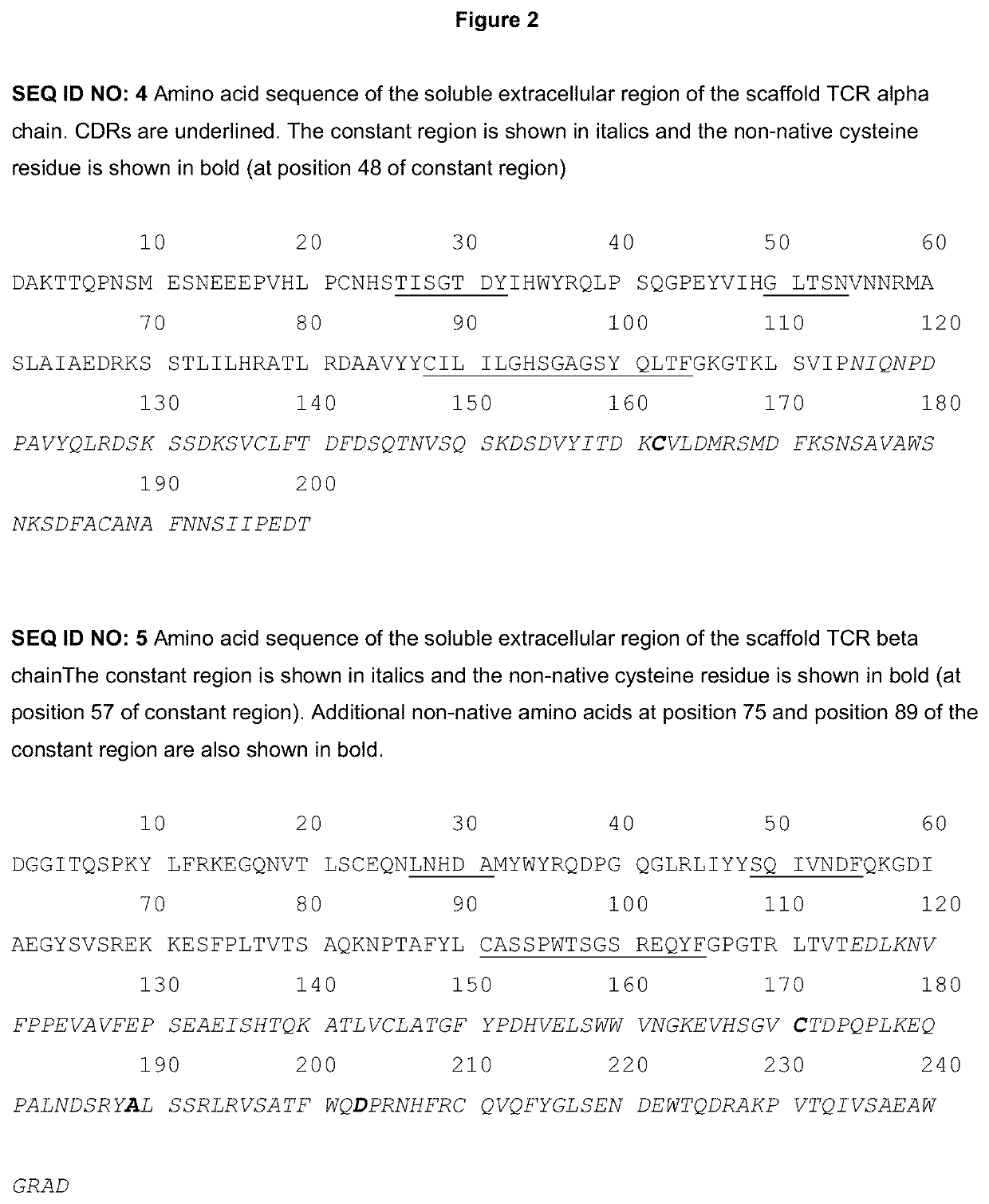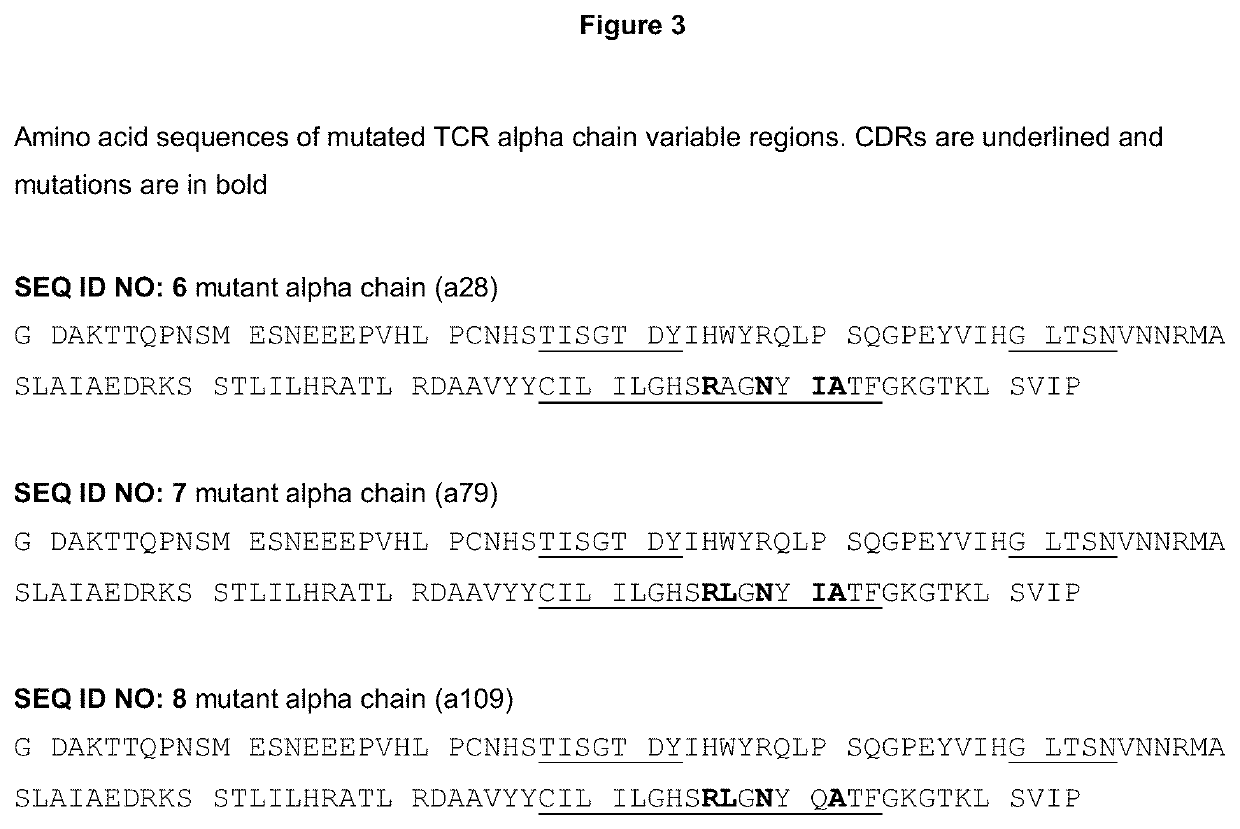T cell receptors
a technology of receptors and t cells, applied in the field of t cell receptors, can solve the problems of difficult production of tcrs, cancerous cells often escaping detection and destruction, and specific tcrs in the natural repertoir
- Summary
- Abstract
- Description
- Claims
- Application Information
AI Technical Summary
Benefits of technology
Problems solved by technology
Method used
Image
Examples
example 1
n, Refolding and Purification of Soluble TCRs
Method
[0142]DNA sequences encoding the alpha and beta extracellular regions of soluble TCRs of the invention were cloned separately into pGMT7-based expression plasmids using standard methods (as described in Sambrook, et al. Molecular cloning. Vol. 2. (1989) New York: Cold spring harbour laboratory press). The expression plasmids were transformed separately into E. coli strain Rosetta (BL21 pLysS), or T7 Express, and single ampicillin-resistant colonies were grown at 37° C. in TYP (+ampicillin 100 μg / ml) medium to an OD600 of ˜0.6-0.8 before inducing protein expression with 0.5 mM IPTG. Cells were harvested three hours post-induction by centrifugation. Cell pellets were lysed with BugBuster protein extraction reagent (Merck Millipore) according to the manufacturer's instructions. Inclusion body pellets were recovered by centrifugation. Pellets were washed twice in Triton buffer (50 mM Tris-HCl pH 8.1, 0.5% Triton-X100, 100 mM NaCl, 10 mM...
example 2
n, Refolding and Purification of ImmTAC Molecules (Soluble TCR-Anti CD3 Fusion Molecules)
Method
[0145]ImmTAC preparation was carried out as described in Example 1, except that the TCR beta chain was fused via a linker to an anti-CD3 single chain antibody. In addition a cation exchange step was performed during purification following the anion exchange. In this case the peak fractions from anion exchange were diluted 20-fold in 20 mM MES (pH6.5), and applied to a POROS® 50HS cation exchange column. Bound protein was eluted with a gradient of 0-500 mM NaCl in 20 mM MES. Peak ImmTAC fractions were pooled and adjusted to 50 mM Tris pH 8.1, before being concentrated and applied directly to the gel filtration matrix as described in Example 1.
example 3
haracterisation
[0146]Binding analysis of purified soluble TCRs and ImmTAC molecules to the relevant peptide-HLA complex was carried out by surface plasmon resonance, using a BIAcore 3000 or BIAcore T200 instrument, or by biolayer interferometry, using a ForteBio Octet instrument). Biotinylated class I HLA-A*02 molecules were refolded with the peptide of interest and purified using methods known to those in the art (O'Callaghan et al. (1999). Anal Biochem 266(1): 9-15; Garboczi, et al. (1992). Proc Natl Acad Sci USA 89(8): 3429-3433). All measurements were performed at 25° C. in Dulbecco's PBS buffer, supplemented with 0.005% P20.
BIAcore Method
[0147]Biotinylated peptide-HLA monomers were immobilized on to streptavidin-coupled CM-5 sensor chips. Equilibrium binding constants were determined using serial dilutions of soluble TCR / ImmTAC injected at a constant flow rate of 30 μl min−1 over a flow cell coated with ˜200 response units (RU) of peptide-HLA-A*02 complex. Equilibrium responses...
PUM
| Property | Measurement | Unit |
|---|---|---|
| molecular weight | aaaaa | aaaaa |
| pH | aaaaa | aaaaa |
| pH | aaaaa | aaaaa |
Abstract
Description
Claims
Application Information
 Login to View More
Login to View More - R&D
- Intellectual Property
- Life Sciences
- Materials
- Tech Scout
- Unparalleled Data Quality
- Higher Quality Content
- 60% Fewer Hallucinations
Browse by: Latest US Patents, China's latest patents, Technical Efficacy Thesaurus, Application Domain, Technology Topic, Popular Technical Reports.
© 2025 PatSnap. All rights reserved.Legal|Privacy policy|Modern Slavery Act Transparency Statement|Sitemap|About US| Contact US: help@patsnap.com



